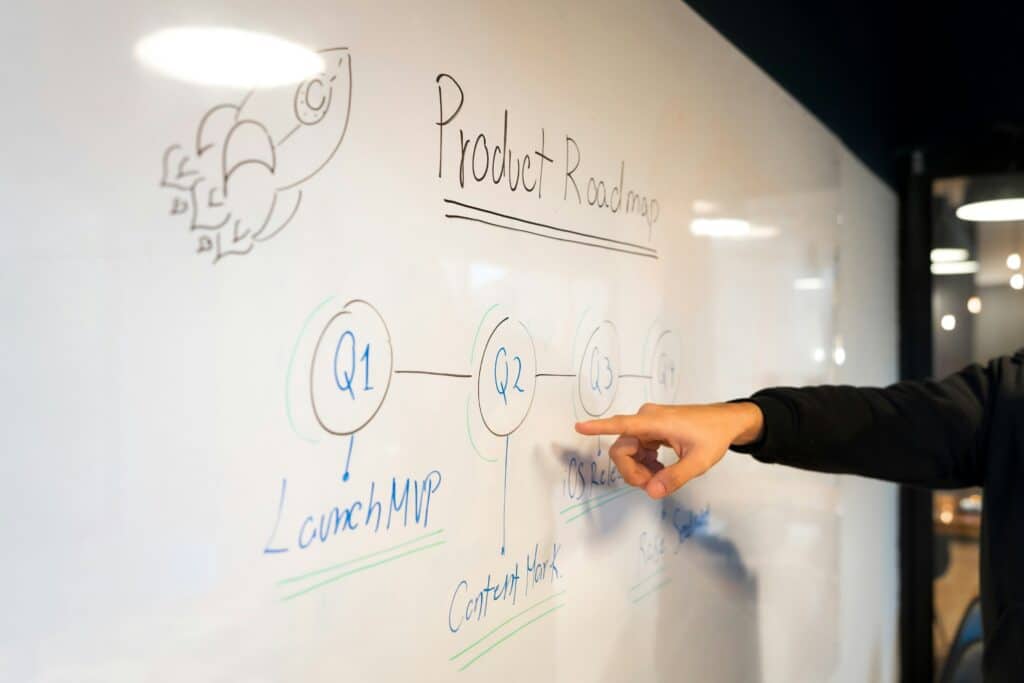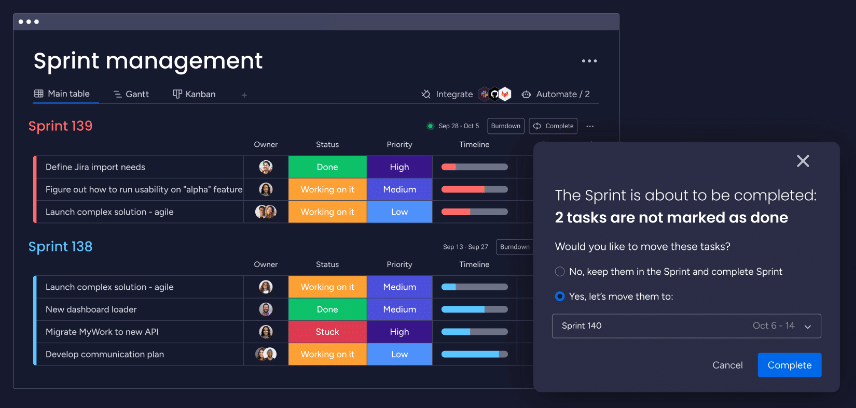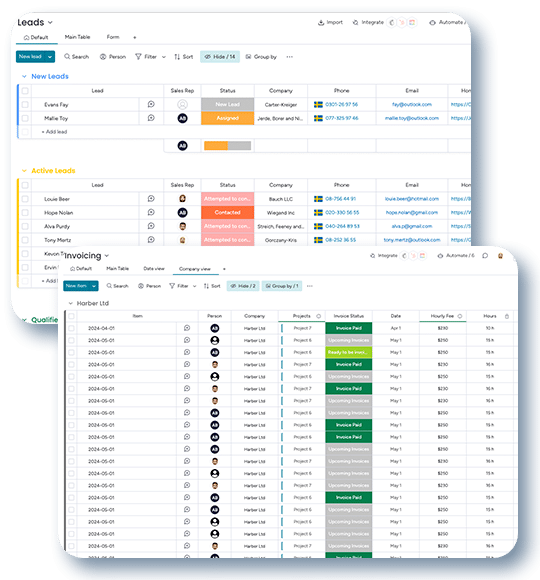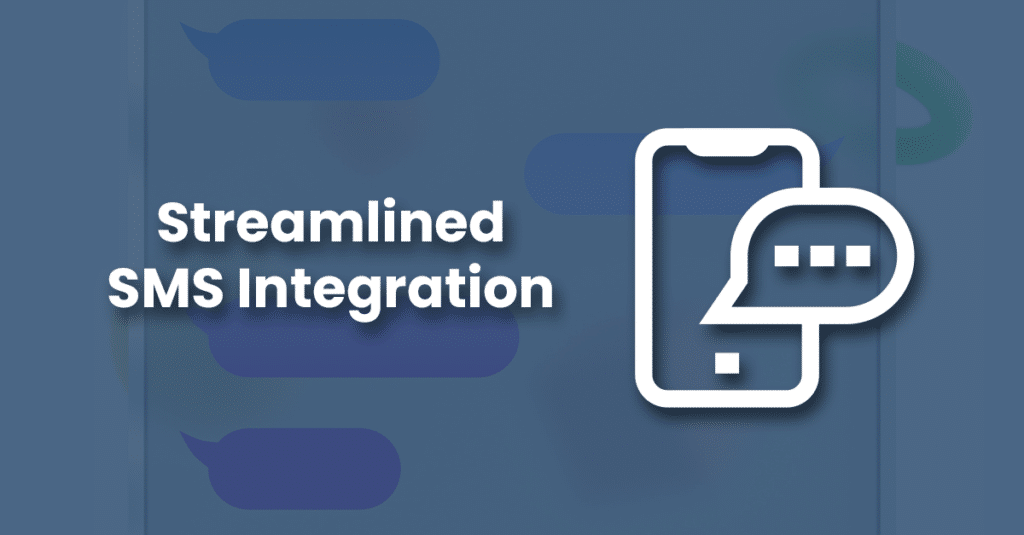Introduction
In the ever-evolving landscape of project management, the quest for methods that foster not just productivity but continuous improvement is relentless. Enter Kanban, a technique with roots deep in the Japanese manufacturing sector. Nowadays it’s a cornerstone in the toolkit of modern project managers globally. This approach is not just about getting things done. It’s about consistently elevating the way we work, one task at a time. In this blog post, we’ll uncover how using Kanban for continuous productivity improvements in projects can be a game-changer.
The beauty of Kanban lies in its simplicity and its power in adaptability. Whether you’re managing a small team or orchestrating a large-scale project, the principles of Kanban can be tailored to fit your needs, driving productivity and efficiency in a way that’s both manageable and sustainable. This blog post delves into the transformative potential of using Kanban for continuous productivity improvements in projects. We’ll explore how this agile methodology can not only streamline your current projects but also set the stage for ongoing enhancements in your workflow and output.
By integrating the principles of Kanban into your project management strategies, you’re keeping up with the demands of the modern business world. Additionally, you’re staying ahead, continuously improving and refining your processes. So, let’s embark on this journey of discovering how using Kanban for continuous productivity improvements in projects can be the game-changer your team needs to thrive in an ever-changing business environment.
Understanding the Basics of Kanban
Delving into the world of Kanban, it’s essential to grasp its foundational elements. This methodology, pivotal for driving continuous productivity improvements in projects, is rooted in principles that are both straightforward and deeply transformative. Let’s break down these basics to better understand Kanban’s functions and why it’s so effective.
What is Kanban?
Kanban, originally developed in Japan, is more than just a project management tool; it’s a mindset. At its core, Kanban is about visualising work, maximising efficiency, and implementing continuous improvements. Its origin story, tied to Toyota’s production system, reveals its deep connection with efficiency and lean processes. But what makes Kanban particularly appealing in the modern context is its adaptability to various environments – from manufacturing to software development and beyond. Understanding this adaptability is key to harnessing Kanban for continuous productivity improvements in projects.
The Kanban Board Explained
The heartbeat of the Kanban system is the Kanban board. This visual tool is deceptively simple yet incredibly powerful in managing and improving workflow. Typically, a Kanban board is divided into columns that represent different stages of the workflow. Each task or project component is represented by a card that moves from left to right as work progresses. What sets Kanban boards apart is their ability to provide immediate visual cues about the status, progress, and bottlenecks in projects. In turn, this facilitates continuous productivity improvements. Whether physical or digital, these boards are instrumental in providing teams with a clear overview of their work. This helps in prioritising tasks, and ensuring a smooth flow of work based on current capacity and demand.
Omnitas Newsletter
Sign up for our monthly newsletter to stay up-to-date on our latest blog articles, videos and events!
Thank you!
You have successfully joined our subscriber list.
Implementing Kanban for Project Success
Transitioning to a Kanban system represents a significant step towards achieving continuous productivity improvements in projects. Implementation is key, requiring a thoughtful approach that aligns with your project goals and team dynamics. Let’s explore how to successfully integrate Kanban into your project management practices.
Setting Up Your Kanban Board
The first step in using Kanban for continuous productivity improvements in projects is to set up your Kanban board. This involves identifying the stages of your workflow and representing them as columns on the board. Common stages include ‘To Do’, ‘In Progress’, and ‘Done’, but these can be customized to fit your specific project. Next, populate the board with cards, each representing a task or project element. It’s crucial to assign realistic Work In Progress (WIP) limits to prevent bottlenecks and ensure a smooth flow of tasks. Whether you opt for a physical board or a digital one, the goal is to create a clear, visual representation of your project’s workflow. This makes it easier to manage and optimize over time.
Kanban in Action
To understand the real-world impact of using Kanban for continuous productivity improvements in projects, let’s examine an example. Consider a software development team that implemented Kanban to manage their increasing workload. By visualizing their tasks on a Kanban board and setting WIP limits, they could identify bottlenecks early and redistribute resources more efficiently. As a result, they experienced a marked improvement in project completion times and overall team productivity. This exemplifies how Kanban can transform project management, providing tangible benefits in terms of efficiency and productivity.
As we delve deeper into how Kanban can be leveraged for continuous improvement and advanced strategies for experienced teams, it becomes clear that this methodology is not just about managing work. It’s also about improving how work is done at every stage of the project lifecycle.
Leveraging Kanban for Continuous Improvement
The true power of Kanban in project management lies in its ability to foster an environment of ongoing enhancement and adaptation. This section explores strategies for using Kanban not just as a tool for managing tasks, but as a catalyst for continuous productivity improvements in projects.
Identifying and Eliminating Bottlenecks
One of the primary advantages of using Kanban for continuous productivity improvements in projects is its efficacy in identifying bottlenecks. These are points in the process where work gets backed up, slowing down overall progress. Kanban boards make these trouble spots highly visible, allowing teams to address issues promptly. Regular team meetings to review the board can help in quickly identifying these bottlenecks. Once identified, strategies such as reallocating resources, splitting large tasks, or adjusting WIP limits can be employed to alleviate these choke points. In turn, this smoothes the workflow and enhances productivity.
Streamlining Processes with Kanban
Kanban isn’t just about managing work; it’s about improving the way work is done. By continuously monitoring the flow of tasks on the Kanban board, teams can spot patterns and inefficiencies in their processes. This ongoing observation allows for incremental changes — fine-tuning tasks, reordering processes, and removing unnecessary steps — all aimed at streamlining work processes. This aspect of Kanban is vital for continuous productivity improvements. It encourages teams to evolve their methods, adapt to changing circumstances, and consistently seek ways to work smarter, not harder.
Through the identification of bottlenecks and the streamlining of processes, Kanban proves to be more than a project management tool—it becomes a philosophy of continuous improvement and efficiency.
Advanced Kanban Strategies for Experienced Teams
For teams well-versed in the basics of Kanban, there are advanced strategies that can further enhance the methodology’s impact on continuous productivity improvements in projects. This section delves into these sophisticated techniques, offering insights for teams ready to take their Kanban practice to the next level.
Beyond the Basics: Enhancing Your Kanban System
Experienced teams can enhance their Kanban systems by integrating more complex elements. This includes incorporating classes of service to categorize different types of work, using advanced metrics like lead time and cycle time for deeper insights, and applying cumulative flow diagrams to analyze workflow over time. Another strategy is to experiment with different Kanban board layouts, such as swimlanes, to better manage multiple streams of work. These advanced tactics allow teams to gain a more nuanced understanding of their workflow, identify areas for improvement more precisely, and thereby drive more significant productivity enhancements in their projects.
Scaling Kanban Across Multiple Teams
When multiple teams within an organization adopt Kanban, the challenge is to scale the methodology while maintaining its effectiveness. This involves synchronizing workflows across teams, ensuring clear communication, and aligning goals. One approach is to use a portfolio Kanban board, which provides a high-level view of all projects across teams, helping to coordinate efforts and prioritize work. Another key factor is fostering a Kanban culture organization-wide, where continuous improvement is a shared goal. Successful scaling requires not just the adaptation of Kanban practices but also a commitment to the Kanban principles of flow, visualization, and continuous improvement at every level of the organization.
In these advanced applications of Kanban, the focus remains on using the methodology for continuous productivity improvements in projects. With these strategies, experienced teams can optimize their workflows, enhance collaboration, and achieve remarkable efficiencies on a larger scale.

Overcoming Common Challenges in Kanban Adoption
While the benefits of using Kanban for continuous productivity improvements in projects are clear, the path to successful adoption can have its obstacles. Understanding and addressing these challenges is crucial for teams to fully leverage Kanban’s potential. This section explores common hurdles and offers strategies to overcome them.
Resistance to Change and How to Address It
One of the most significant barriers to adopting any new methodology, including Kanban, is resistance to change. Team members may be hesitant to adopt new practices, fearing increased workload or uncertainty about the new system’s efficacy. To counter this, it’s important to communicate the benefits of Kanban clearly and involve the team in the implementation process. Training sessions, workshops, and involving team members in setting up the Kanban board can foster a sense of ownership and ease the transition. Highlighting quick wins and showing tangible improvements in workflow and productivity can also help in winning over sceptics.
Ensuring Continuous Improvement
Adopting Kanban is not a one-time event but an ongoing journey. A common challenge post-adoption is ensuring that the initial momentum doesn’t fade away. To maintain and enhance the effectiveness of Kanban, continuous improvement should be ingrained in the team’s culture. Regular retrospectives to reflect on what is working and what isn’t, coupled with an openness to adapt and evolve the Kanban system, are vital. Teams should be encouraged to regularly review their workflow, experiment with different strategies, and learn from both successes and failures. This iterative approach is key to using Kanban for continuous productivity improvements in projects.
By addressing these challenges head-on, teams can not only successfully implement Kanban but also sustain its benefits over time.
Conclusion
Our exploration into using Kanban for continuous productivity improvements in projects underscores its versatility and effectiveness in enhancing productivity and efficiency. The journey through the basics, implementation strategies, advanced techniques, and overcoming adoption challenges illustrates how Kanban can be a transformative tool for any project team.
An integral part of this transformation is choosing the right tool to implement Kanban. Here, monday.com emerges as an excellent option. As a flexible and user-friendly platform, monday.com allows teams to create customizable Kanban boards that fit their specific project needs. Its visual interface and collaboration features make it an ideal choice for managing workflows and ensuring continuous improvement. Whether you’re a small team or a large enterprise, monday.com adapts to your unique workflow, empowering your team to maximize productivity using the principles of Kanban.
If you’re eager to experience how monday.com can revolutionize your project management, why not try it out for yourself? We at Omnitas are excited to offer you a free trial of monday.com. Explore its features, set up your own Kanban board, and witness the positive impact on your project’s productivity.
And if you need help with implementing the platform to leverage its full capabilities and get it customized to your business needs, we’re here to help. At Omnitas, we specialize in tailoring monday.com to fit your project requirements perfectly. Book a free consultation with us below, and let’s work together to optimize your project management processes and achieve continuous productivity improvements.
If you found this blog post useful, make sure to sign up for our monthly newsletter below. Stay in the loop regarding all things business efficiency and automation!












